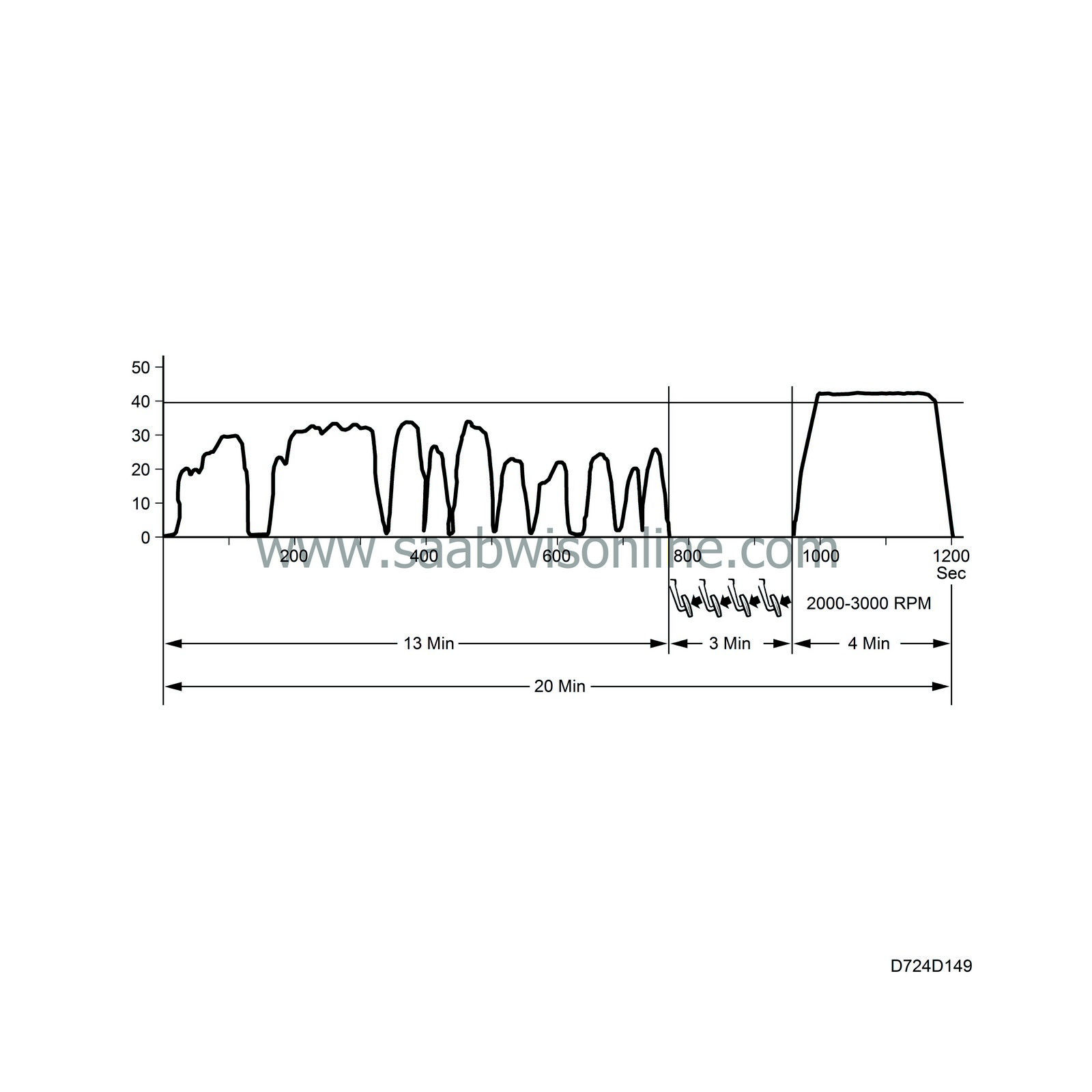Example of a trip
| Example of a trip |
Fault diagnosis in the Service Manual is always concluded with a final check.
The final check includes a driving cycle that is specific for each type of rectified fault.
The driving cycle ensures that OBD II diagnosis is carried out on the function in question.
Any remaining faults can then be detected after reading out the diagnostic faults.
This procedure ensures that an individual fault has been rectified after repair.
A trip means driving the car in such a way that all the components and functions covered by OBD II diagnostics have been monitored.
After a major repair in which a large number of emission-related components or functions are affected, e.g. when the powertrain has been removed, a trip may be justified. Any remaining faults can then be detected by reading out diagnostic trouble codes.
After a trip, all the conditions for OBD II diagnostics will have been fulfilled one after the other in the correct order.
The time it takes to carry out a trip principally depends on the following factors:
| • |
traffic conditions
|
|
| • |
driving style
|
|
| • |
variant of engine management system
|
|
| • |
any faults discovered
|
|
| • |
climate (affects A/C and radiator fan, which may interfere with certain diagnosis). The is an infinite number of combinations of the above factors, which means the time it takes to carry out a trip can vary greatly. The following example of a trip is therefore applicable only if the following conditions are fulfilled:
|
|
| • |
choice of traffic conditions according to the driving profile
|
|
| • |
driving according to driving profile
|
|
| • |
Trionic M96-
|
|
| • |
A/C disengaged and radiator fan continuously engaged for a certain period of time
|
|
| • |
only 1 fault can be detected with certainty.
|
|
| • |
Clear any diagnostic trouble codes and detach the temperature sensor connection to MIU so that the radiator fan runs continuously during the trip.

|
|
| • |
Driving in urban traffic long enough for the vehicle speed to have exceeded 0 km/h for a total of 10 minutes.
|
|
| • |
braking on at least 6 occasions from >40 km/h to 0 km/h
|
|
| • |
Stop the car and with the engine to idling, perform the following:
|
|
| • |
select Neutral (or Park) and apply the handbrake
|
|
| • |
disengage A/C (ACC: select ECON)
|
|
| • |
do nothing to affect the engine load (power steering servo, electric consumers, etc.)
|
|
| • |
depress the accelerator pedal for a few seconds and then allow the engine to idle for 30 sec., repeat this procedure three times
|
|
| • |
drive with steady accelerator depression at 40-90 km/h for 4 minutes
|
|
| • |
select a gear so that the engine speed is 2000-3000 rpm
|
|
| • |
avoid changes in throttle position by driving on level roads as much as possible
|
|
| • |
Final check
|
|
| • |
Check for any diagnostic trouble codes and rectify as necessary
|
|
| • |
connect the temperature sensor to MIU
|
|
| • |
Clear diagnostic trouble codes for the temperature sensor connection to MIU
|
|


